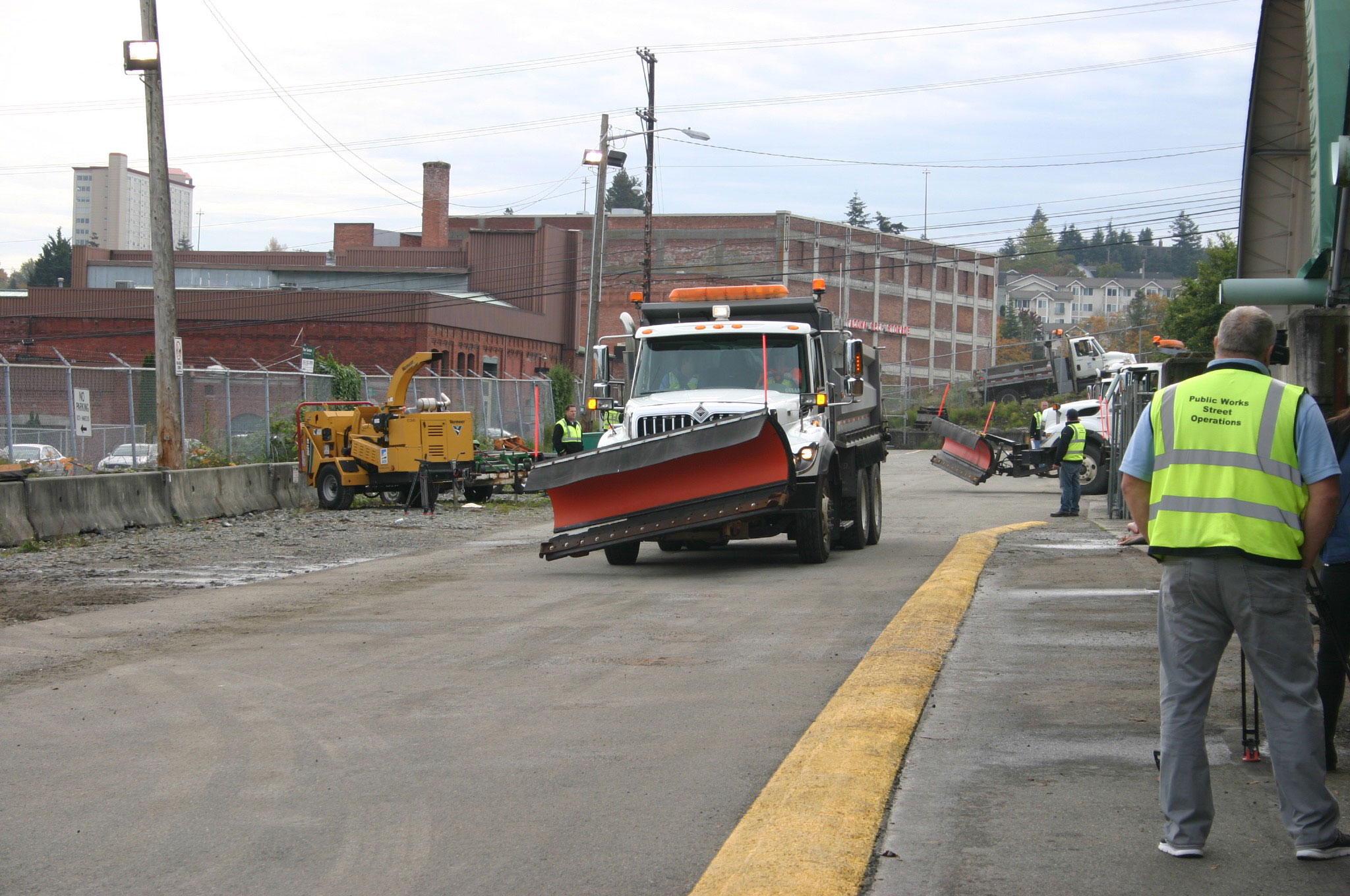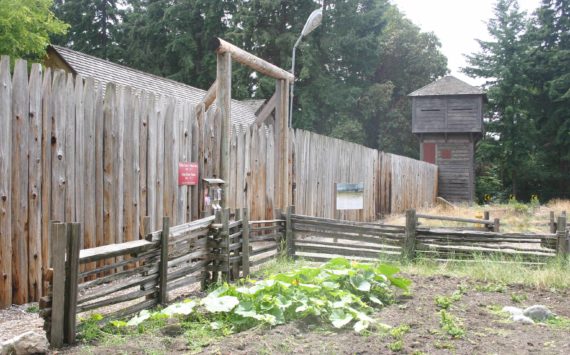By David Guest
Tacoma Daily Index editor
It’ll be colder. And maybe wetter. At least that’s what long-term weather forecasters seem to think. And we all know what that means: it’ll be warmer and drier.
But those public agencies tasked with keeping the roads drivable can’t get caught up in forecasts. They prepare for the worst our winter weather can dish out.
Thursday, Oct. 20, Tacoma and Pierce County road crews mounted snow plow blades on their trucks, checked their stockpiles of sand and salt, and went for test drives on area roads to make sure that when snow and ice make an appearance in the next few months, residents will be able to get to where they are going safely.
Tacoma voters passed Proposition 3 and Proposition A in 2015, which will generate approximately $325 million in revenue for street maintenance and repair (through taxes, grants and federal matching funds).
“We’ve got a lot of new employees because of Props 3 and A – we’ve added 26 new employees,” said Matt Fengler, assistant division manager for Tacoma Public Works. “We need to tell them about what we do and how we do it. We have to refamiliarize everybody with the equipment – snow plows, sanders, brine trucks.”
The City of Tacoma applies a salt brine solution to major roads throughout the winter. Whenever the surface temperatures hit freezing, the trucks are dispatched at night and in the early morning hours. Those vertical streaks you see on the pavement in front of you will lower the melting temperature of ice that may form.
Salt is the preferred weapon to combat icy road conditions. The city claims that it’s more cost effective and friendlier to the environment than laying down tons of sand. Sand has to be swept up later, while salt will wash away when the rains come and have no impact when storm drains carry it away to mix with the saltwater of Puget Sound.
Fengler has 19 trucks with snow plows that can be deployed when snowfall finally arrives. He said when the forecast calls for a half inch of snow or more, his crews are called to “go full operation.” Full operations are 24 hours a day, with workers on duty for 12.5 hours at a time.
The city and county recommend drivers prepare for ice and snow by keeping chains and emergency supplies in their vehicles. And if a driver finds that a road becomes impassible, they should do their best to see that their car is pulled off the side of the road or parked in an available off-street parking area.
“Anything left in a drive lane on one of our snow routes will be towed,” Fengler said. “We understand that things break down and people basically don’t feel safe driving, but if we do (encounter abandoned vehicles), we report it, and the city has a tow contractor come out and tow the vehicles for us.”








